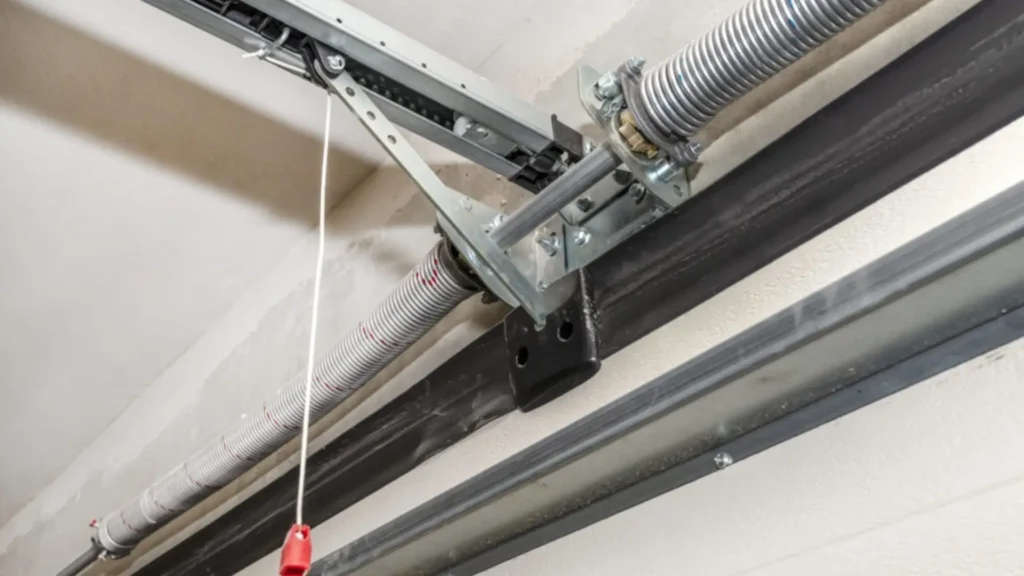Garage door springs play a crucial role in the smooth operation of your garage door, making it easier to open and close. However, over time, these springs can wear out, posing potential safety risks and operational issues. Knowing how to identify and replace worn-out garage door springs is essential for maintaining your garage door’s functionality and safety. Here are some essential tips to guide you through garage door spring replacement.
Signs of Worn-Out Garage Door Springs
Recognizing the signs of worn-out garage door springs can save you from unexpected breakdowns and costly repairs. One of the most common indicators is the garage door becoming difficult to open or close. If you notice the door moving unevenly or making unusual noises, such as creaking or popping, this could also signal that the springs are wearing out. Another clear sign is visible gaps in the coils of the torsion springs or stretched extension springs, indicating they have lost tension. Additionally, if the garage door appears to be sagging or doesn’t stay in place when partially open, it’s time to inspect the springs.
Preparing for Garage Door Spring Replacement
Before starting the replacement process, ensure you have the necessary tools and safety equipment. You’ll need winding bars, an adjustable wrench, a socket set, C-clamps or locking pliers, safety glasses, gloves, and a sturdy ladder. Safety is paramount, so make sure the garage door is fully closed and disconnected from the power source to prevent any accidental activation.
Securing and Releasing Tension
Begin by securing the garage door spring replacement to prevent any movement. Use C-clamps or locking pliers to lock the door in place on the track. For torsion springs, insert a winding bar into the winding cone and carefully loosen the set screws with an adjustable wrench. Hold the winding bar firmly and slowly release the tension by turning it one-quarter turn at a time until the spring is fully unwound. For extension springs, detach the safety cables and remove the springs from the brackets and track.
Removing and Installing Springs
Once the tension is released, remove the old springs. For torsion springs, slide them off the torsion bar, and for extension springs, disconnect them from the door and pulley system. Installing new springs follows a similar process but in reverse. For torsion springs, slide the new springs onto the torsion bar, ensuring the winding cone is on the correct side. For extension springs, attach the new springs to the brackets and track, then reattach the safety cables.
Winding and Testing
Winding torsion springs requires precision and care. Insert the winding bar into the winding cone and rotate it to wind the spring, following the manufacturer’s specifications for the number of turns. Secure the set screws once the spring is properly wound. After installing the new springs, remove the clamps or locking pliers and reconnect the garage door opener. Test the door by lifting it manually halfway up. If it stays in place, the springs are correctly balanced. If not, you may need to adjust the tension accordingly.
Final Inspection and Maintenance
Conduct a final inspection to ensure all components are securely in place. Check the cables, brackets, and springs for proper alignment and tension. Regular maintenance can extend the life of your garage door springs. Lubricate the springs and moving parts every six months and routinely check for signs of wear and tear, such as rust or fraying. Keeping the garage door clean and free from debris can also help maintain its functionality.
Identifying and replacing worn-out garage door springs is crucial for the safety and efficiency of your garage door. By following these tips and ensuring regular maintenance, you can prevent unexpected issues and prolong the lifespan of your garage door system. However, if you feel unsure or encounter any difficulties during the process, don’t hesitate to seek professional assistance for your garage door spring replacement. Safety should always be your top priority, and professional help can ensure the job is done correctly and safely.
Learn more:
The Complete Homeowner’s Manual to Replacing Garage Door Springs

